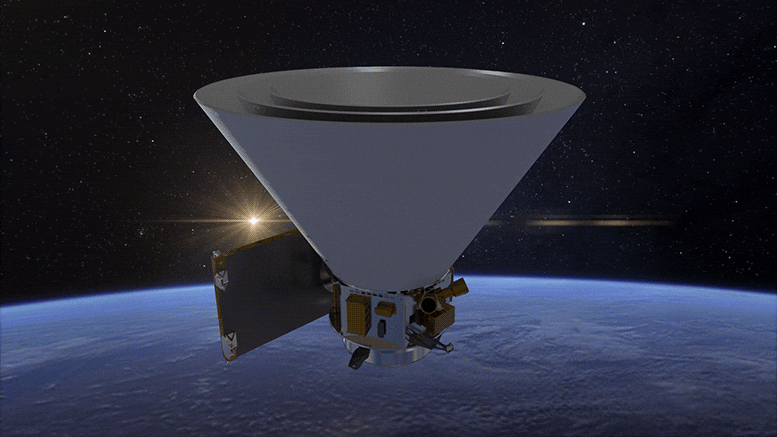
The SPHEREx mission will have some similarities with the James Webb Space Telescope. But the two observatories will take dramatically different approaches to studying the sky.
NASA’s upcoming SPHEREx mission will be able to scan the entire sky every six months and create a map of the cosmos unlike any before. Scheduled to launch no later than April 2025, it will probe what happened within the first second after the big bang, how galaxies form and evolve, and the prevalence of molecules critical to the formation of life, like water, locked away as ice in our galaxy. Achieving these goals will require cutting-edge technology, and NASA has this month approved final plans for all the observatory’s components.
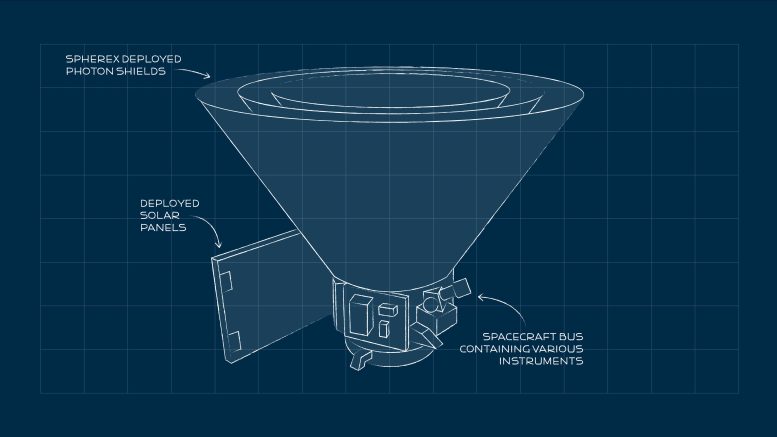
It’s a long road from designing a spacecraft to launching and operating it. Major components of NASA’s SPHEREx spacecraft, which will seek to answer big questions about the universe, are shown in these illustrations, in draft form (this image) and now more fully realized (below). Credit: NASA/JPL-Caltech
“We’re at the transition from doing things with computer models to doing things with real hardware,” said Allen Farrington, SPHEREx project manager at NASA’s Jet Propulsion Laboratory in Southern California, which manages the mission. “The design for the spacecraft, as it stands, is confirmed. We have shown that it’s doable down to the smallest details. So now we can really start building and putting things together.”
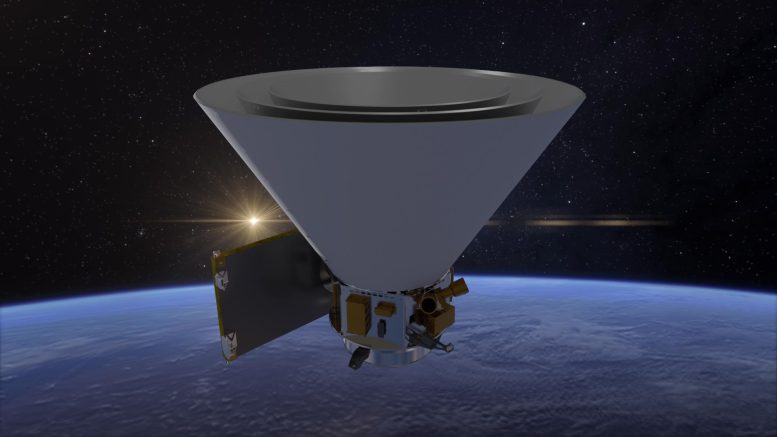
It’s a long road from designing a spacecraft to launching and operating it. Major components of NASA’s SPHEREx spacecraft, which will seek to answer big questions about the universe, are shown in these illustrations, in draft form (above) and now more fully realized (this image). Credit: NASA/JPL-Caltech
To answer big questions about the universe, scientists need to look at the sky in different ways. Many telescopes, like NASA’s Hubble Space Telescope, are built to focus on individual stars, galaxies, or other cosmic objects, and to study them in detail. But SPHEREx (which stands for Spectro-Photometer for the History of the Universe, Epoch of Reionization and Ices Explorer) belongs to another class of space telescopes that quickly observe large portions of the sky, surveying many objects in a short period of time. SPHEREx will scan over 99% of the sky every six months; by contrast, Hubble has observed about 0.1% of the sky in more than 30 years of operations. Although survey telescopes like SPHEREx can’t see objects with the same level of detail as targeted observatories, they can answer questions about the typical properties of those objects throughout the universe.
NASA’s SPHEREx mission will scan the entire sky in 97 color bands, creating a map that will benefit astronomers around the world. This video explains the three key science topics that SPHEREx will explore: cosmic inflation, galaxy evolution, and interstellar ices. Credit: NASA/JPL-Caltech
For example, NASA’s recently launched James Webb Space Telescope will target individual exoplanets (planets outside our solar system), measuring their size, temperature, weather patterns, and makeup. But do exoplanets, on average, form in environments that are conducive to life as we know it? With SPHEREx, scientists will measure the prevalence of life-sustaining materials like water that reside in icy dust grains in the galactic clouds from which new stars and their planetary systems are born. Astronomers believe the water in Earth’s oceans, thought to be essential to life starting on Earth, originally came from such interstellar material.
“It’s the difference between getting to know a few individual people, and doing a census and learning about the population as a whole,” said Beth Fabinsky, deputy project manager for SPHEREx at JPL. “Both types of studies are important, and they complement each other. But there are some questions that can only be answered through that census.”
SPHEREx and Webb differ not only in their approach to studying the sky but in their physical parameters. Webb is the largest telescope to ever fly in space, with a 21.3-foot (6.5-meter) primary mirror to capture the highest-resolution images of any space telescope in history. The observatory protects its sensitive instruments from the Sun’s blinding light with a sunshield that’s as big as a tennis court. SPHEREx, on the other hand, has an 8-inch primary mirror and a sunshield that is just 10.5 feet (3.2 meters) across.
But both observatories will collect infrared light – wavelengths outside the range that human eyes can detect. Infrared is sometimes called heat radiation because it is emitted by warm objects, which is why it’s used in night vision equipment. The two telescopes will also both use a technique called spectroscopy to break infrared light into its individual wavelengths, or colors, just like a prism breaks sunlight into its component colors. Spectroscopy is what enables both SPHEREx and Webb to reveal what an object is made of, because individual chemical elements absorb and radiate specific wavelengths of light.
In order to pursue big-picture questions, the SPHEREx team first had to answer more practical ones, such as whether the instrument on board could survive the environment in space, and if all its components could be packed together and operate as a system. Last month, the team’s final plans were approved by NASA, a step that the agency calls critical design review or CDR. This marks a major milestone for the mission on the way to launch.
“COVID continues to be a big challenge for us in developing new space projects. Everything the country went through over the past year, from supply chain disruptions to working at home with kids, we’ve gone through as well,” said SPHEREx Principal Investigator James Bock, who is a scientist at JPL and Caltech in Pasadena, California. “It’s really incredible to be part of a team that has handled these difficulties with enthusiasm and a seemingly unlimited supply of determination.”
More About the Mission
SPHEREx is managed by JPL for NASA’s Science Mission Directorate in Washington. The mission’s principal investigator is based at Caltech, which manages JPL for NASA and will also develop the payload in collaboration with JPL. Ball Aerospace in Boulder, Colorado, will supply the spacecraft. The Korea Astronomy and Space Science Institute (KASI) is an instrument and science partner for the mission. Data will be processed and archived at IPAC at Caltech. The SPHEREx science team includes members from 10 institutions across the U.S. and South Korea.



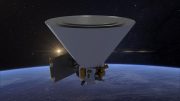
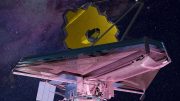
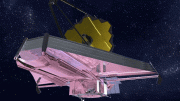



Babu G. Ranganathan*
(B.A. Bible/Biology)
JUST BECAUSE SCIENCE CAN EXPLAIN how an airplane works doesn’t mean that no one designed or made the airplane. And just because science can explain how life or the universe works doesn’t mean there was no Designer and Maker behind them.
Natural laws may explain how the order in the universe works and operates, but mere undirected natural laws cannot explain the origin of that order. Once you have a complete and living cell then the genetic code and biological machinery exist to direct the formation of more cells from raw materials such as amino acids and other chemicals, but how could life or the cell have naturally originated when no directing code and mechanisms existed in nature? Read my Internet article: HOW FORENSIC SCIENCE REFUTES ATHEISM.
WHAT IS SCIENCE? Science simply is knowledge based on observation. No human observed the universe coming by chance or by design, by creation or by evolution. These are positions of faith. The issue is which faith the scientific evidence best supports.
SCIENCE SHOWS THAT THE UNIVERSE CANNOT BE ETERNAL because it could not have sustained itself eternally due to the law of entropy (increasing and irreversible net energy decay, even in an open system). Even a hypothetical oscillating universe could not continue to oscillate eternally! Einstein’s General Theory of Relativity shows that space, matter, and time all are physical and all had a beginning. Space even produces particles because it’s actually something, not nothing. What about the Higgs boson (the so-called “God Particle”)? The Higgs boson, even if it existed, would not have created mass from nothing, but rather it would have converted energy into mass. Einstein showed that all matter is some form of energy. Even time had a beginning! Time is not eternal.
The law of entropy doesn’t allow the universe to be eternal. If the universe were eternal, everything, including time and space (which modern science has shown are as physical as mass or matter), would have become totally entropied by now and the entire universe would have ended in a uniform heat death a long, long time ago. The fact that this hasn’t happened already is powerful evidence for a beginning to the universe.
Popular atheistic scientist Stephen Hawking admits that the universe had a beginning and came from nothing but he believes that nothing became something by a natural process yet to be discovered. That’s not rational thinking at all, and it also would be making the effect greater than its cause to say that nothing created something. The beginning had to be of supernatural origin because science teaches us from the First Law of Thermodynamics that natural laws and processes do not have the ability to bring something into existence from nothing.
The supernatural origin of the universe cannot be proved by science but science points to a supernatural intelligence and power for the origin and order of the universe. Where did God come from? Obviously, unlike the universe, God’s nature doesn’t require a beginning.
The disorder in the universe can be explained because of chance and random processes, but the order can be explained only because of intelligence and design.
Gravity may explain how the order found in the precise and orderly courses of thousands of billions of stars is maintained, but gravity cannot explain the origin of that order.
Some evolutionary astronomers believe that trillions of stars crashed into each other leaving surviving stars to find precise orderly orbits in space. Not only is this irrational, but if there was such a mass collision of stars then there would be a super mass residue of gas clouds in space to support this hypothesis. The present level of residue of gas clouds in space doesn’t support the magnitude of star deaths required for such a hypothesis. And, as already stated, the origin of stars cannot be explained by the Big Bang because of the reasons mentioned above. It’s one thing to say that stars may decay and die into random gas clouds, but it is totally different to say that gas clouds form into stars.
Even the father of Chaos theory admitted that the “mechanisms” existing in the non-living world allow for only very rudimentary levels of order to arise spontaneously (by chance), but not the kind or level of order we find in the structures of DNA, RNA, and proteins. Yes, individual amino acids have been shown to come into existence by chance but not protein molecules which require that the various amino acids be in a precise sequence just like the letters found in a sentence.
Some things don’t need experiment or scientific proof. In law there is a dictum called prima facie evidence. It means “evidence that speaks for itself.”
An example of a true prima facie would be if you discovered an elaborate sand castle on the beach. You don’t have to experiment to know that it came by design and not by the chance forces of wind and water.
If you discovered a romantic letter or message written in the sand, you don’t have to experiment to know that it was by design and not because a stick randomly carried by wind put it there. You naturally assume that an intelligent and rational being was responsible.
It’s interesting that Carl Sagan would have acknowledged sequential radio signals in space as evidence of intelligent life sending them, but he wouldn’t acknowledge the sequential structure of molecules in DNA (the genetic code) as evidence of an intelligent Cause. Read my popular Internet article, HOW DID MY DNA MAKE ME.
I encourage all to read my popular Internet articles:
NATURAL LIMITS TO EVOLUTION
HOW FORENSIC SCIENCE REFUTES ATHEISM
Visit my latest Internet site: THE SCIENCE SUPPORTING CREATION (This site answers many arguments, both old and new, that have been used by evolutionists to support their theory)
Author of popular Internet article, TRADITIONAL DOCTRINE OF HELL EVOLVED FROM GREEK ROOTS
*I have given successful lectures (with question and answer period afterwards) defending creation before evolutionist science faculty and students at various colleges and universities. I’ve been privileged to be recognized in the 24th edition of Marquis “Who’s Who in The East” for my writings on religion and science.